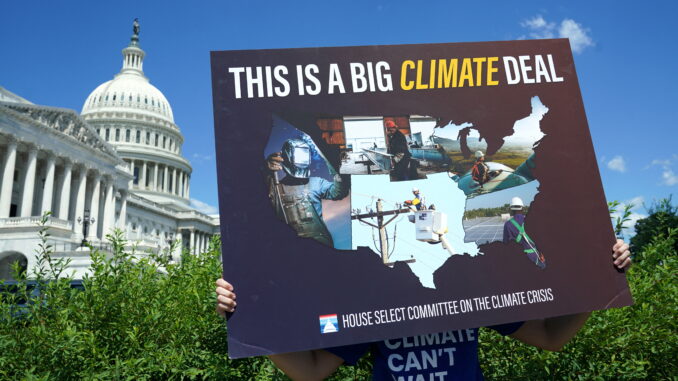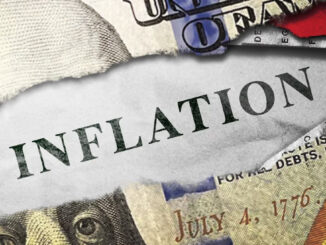
Last August, Congress enacted a significant piece of climate legislation, the Inflation Reduction Act (IRA). The IRA is vast and the climate issues it confronts are massive, reorienting the way the U.S. and global economies consume and produce energy. This is a mammoth task – and several initial estimates show that the Act could both lead to significant reductions in greenhouse gas emissions and drive down costs for clean energy technologies.
If the IRA ends up being this transformative for the energy sector, how might it impact the rest of the economy? In a paper released recently, we tried to answer this question.
At a high level, we find that the Act could energize the economy and decarbonization efforts. It has the potential to lower energy costs, contribute to lower inflation, increase productivity, and raise economic output over time. There may be some growing pains: interest rates and other input costs may rise a bit in the short term as investment demand rises. But those effects are likely to be modest – while the Act could have large effects on the energy sector and emissions, the energy sector is small relative to the whole U.S. economy (power sector investments are less than 1% of GDP).
But what about the cost to the U.S. government? The next several months could bring much debate over the federal deficit and the Act’s costs could be a factor in that conversation.
Much of the discussion suggests the climate components of IRA will cost exactly $369 billion, focusing on an initial estimate. In fact, it’s unclear how much the incentives created by the IRA will cost the U.S. government. The law includes tax credits to incentivize behavior, but some of those tax credits are not capped by an absolute dollar amount. The ultimate cost to the government will depend on how the private sector responds during the time that these credits are available, based on several factors such as the number of participating companies, input costs, grid access, and technology availability.
For example, in one of the key provisions – the production tax credit for clean electricity – the law specifies that any company producing new carbon-free electricity is eligible for incentives for each unit of electricity. This could be from wind or solar power, two of the most prevalent resources for new, carbon-free electricity. But how many companies build new wind and solar electricity plants and qualify for the tax credits depends on a host of issues that are outside of the federal government’s control, including whether costs for inputs like solar panels and wind turbines continue to decline or the companies can get their plants sited and connected to the electricity grid.
The tax credits could also be collected by new electricity producers using technologies that aren’t as prevalent now, like wave energy, small modular nuclear reactors, or nuclear fusion, depending how quickly those technologies develop. The law gives private investors and developers the flexibility to adapt to new technological developments, new supply chain constraints, and new environments – and creates more certainty, thus making these credits more attractive.
For those reasons, estimates vary significantly for the potential cost of the clean energy tax credits and other government expenditures on climate under IRA over the next ten years. Goldman Sachs calculates that the price tag could be as high as $1.2 trillion, “three times more than the official government forecast.”
Our paper shows that even at the higher end of our estimated price range, the Act could be a cost-effective incentive for reducing carbon emissions. IRA incentives will likely cost under $100 per ton of CO2 reduced, which is lower than damage estimates from greenhouse gas emissions in the latest literature (ranging from $100-380/t-CO2 in 2030) a lot less than the damages caused by additional greenhouse gas emission, even before accounting for improved air quality and other benefits.
Going forward, many factors will shape how successful the Act is at addressing climate change and maximizing benefits to the economy. The Inflation Reduction Act could both energize decarbonization efforts and the economy.
Source: www.brookings.edu
ENB
Sandstone Group



